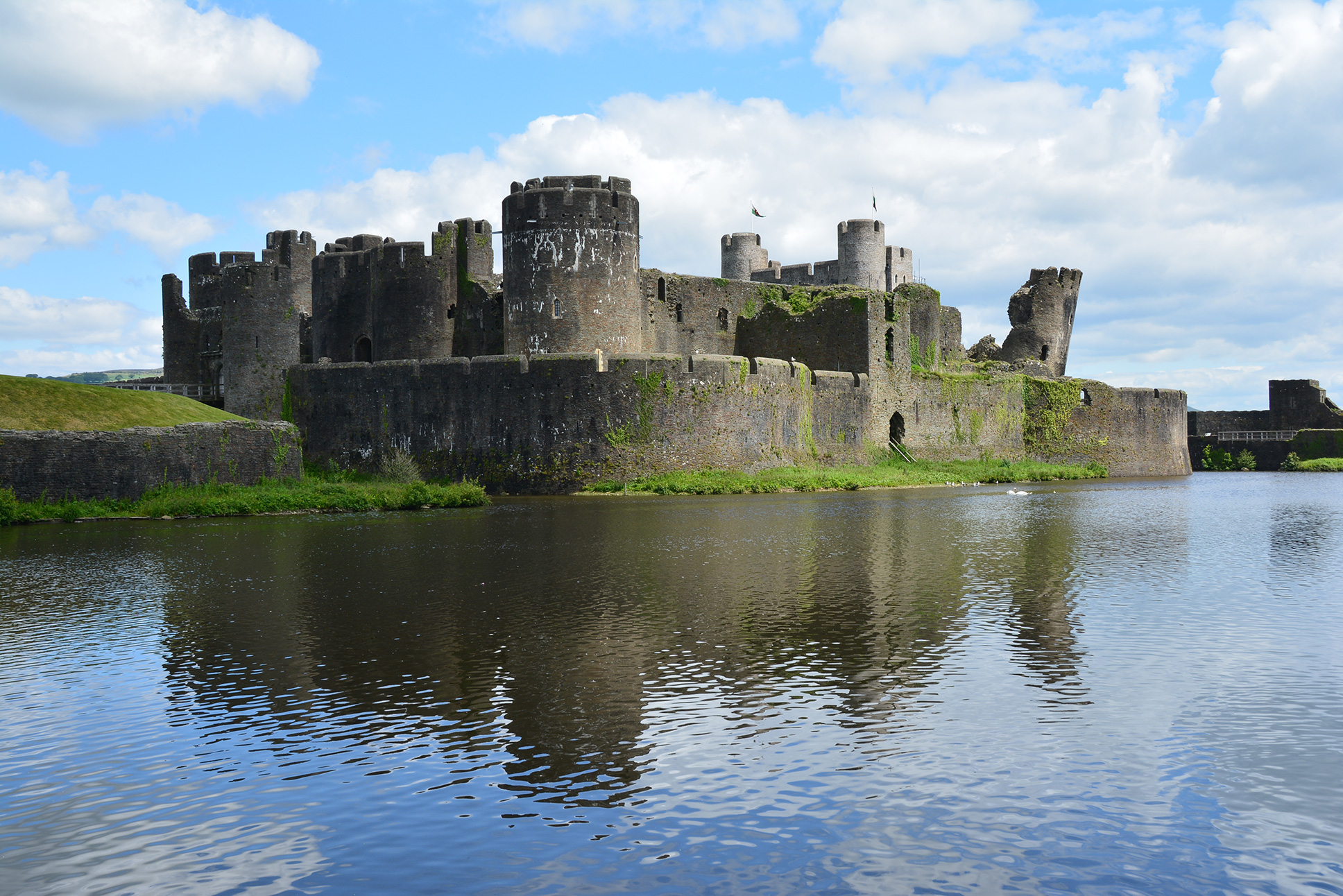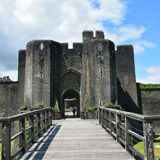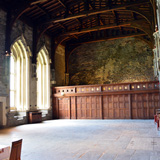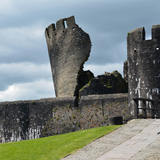History
The construction of Caerphilly Castle began on April 11th, 1268, by Gilbert de Clare, the Red Earl of Gloucester, to defend against invasions by Llywelyn ap Gruffudd, Prince of Wales. Caerphilly Castle would evolve into the largest castle in Wales and the second largest to only Windsor Castle in Britain. It protects an essential route between Cardiff and Brecon.

The early castle consisted of timber palisade walls and was susceptible to fire. In 1270, Llywelyn attacked the castle and burned the site. The following year, Gilbert de Clare began to rebuild the castle. Due to tensions between Gilbert de Clare and Llywelyn ap Gruffudd, King Henry III sent two bishops, Roger de Meyland and Godfrey Giffard, to take control of the castle and try to find a solution to the tension, and construction was halted. By 1272, de Clare's men seized the castle, removed the bishop's soldiers, and Gilbert began construction work again. Gilbert added more water defenses, gatehouses, and towers to the castle.
When Gilbert de Clare died in 1295, his son Gilbert continued with the castle construction until he was killed at the Battle of Bannockburn in 1314. Then, the castle passed to the Despensers through the marriage of Hugh Despenser the Younger to Eleanor de Clare, Earl Gilbert de Clare's eldest daughter.
On January 28th, 1316, Caerphilly Castle was attacked by a force of 10,000 troops during the revolt of Llywelyn Bren, who burned the outer ward, damaging a gate and drawbridge. A sizeable royal army soon arrived and drove the Welsh to retreat to Senghennydd. Llywelyn Bren surrendered to the King's Mercy on March 18th, 1316, and was imprisoned in the Tower of London. Two years later, Hugh Despenser the Younger earned the hatred of the Welsh when he put Llywelyn to death. Despenser was also unpopular with the English, except for King Edward II. Hugh Despenser rebuilt the Great Hall with tall windows and a roof that rested on finely carved capitals with portrait busts.
In 1326, Edward II fled to Caerphilly Castle, seeking refuge from his wife, Queen Isabella, and her lover, Roger Mortimer. Edward went to Margam and Neath and was captured and imprisoned, leaving extensive supplies and 14,000 pounds at the castle. Caerphilly Castle was sieged by William la Zouche and a force of 425 soldiers. The castle was defended by 130 men, including the castle constable, Sir John de Felton, and Hugh Despenser's son, Hugh. By this time, Hugh Despenser the Younger had already been executed by being hanged, drawn, and quartered at Hereford Castle on November 24th, 1326, after being found guilty of theft and treason. The castle surrendered in March of 1327 with the condition that the Hugh the Younger's son was pardoned.
A final siege by the Welsh occurred in the early 15th century when Owain Glyndwr unsuccessfully besieged the castle in a last-ditch effort to reunite the Welsh. In 1416, the castle passed through Isabel le Despenser to her first husband, Richard de Beauchamp, the Earl of Worcester, and then to her second husband, Richard Beauchamp, Earl of Warwick. The Earl of Warwick and Isabel made repairs to the castle to make it suitable for use as their primary residence in the region. The castle passed to Richard Neville in 1449. In 1485, Henry VII gave the lordship of Caerphilly Castle to Jasper Tudor, and then it passed to William Herbert, Earl of Pembroke, who used the castle as his manorial court.
By the mid-16th century, it began to fall into ruin. Even in a ruined state, the castle was formidable enough to cause Oliver Cromwell to attempt to drain the lake and blow up the massive drum towers during the English Civil War, which he failed on both accounts. However, the southeast drum tower was caused to lean outwards after the interior of the tower was blown up. After 700 years, the tower is still standing, albeit with a lean.
In 1776, the castle was acquired by John Stuart, the Marquess of Bute, whose great-grandson, John Crichton-Stuart, would have the roof of the Great Hall restored in 1870. Between 1928 and 1939, stonework at the castle was repaired, and the East Gatehouse and several towers were rebuilt. In 1950, Caerphilly Castle was given to the state, and the lakes that once surrounded the castle were re-flooded, and final restoration work was carried out at the castle. Today, the castle is managed by the Welsh heritage agency CADW as a tourist attraction.
Castle Highlights
Caerphilly Castle is a concentric castle (walls within walls) that predates all the concentric iron ring of castles built by Edward I in northern Wales. Its concentric towers and water defenses provide the castle with multiple layers of defense. The water defenses were inspired by those at Kenilworth Castle in Warwickshire, which Gilbert de Clare would have seen firsthand during sieges he led in 1266 against Simon de Montfort.
The inner ward is the most imposing part of the castle. It sits on an island with two gatehouses and four massive drum towers. The leaning southeast drum tower, Great Hall, and private apartments are in the inner ward.
The outer ward has a long curtain wall and a massive gatehouse, which is also fronted by water defenses. The curtain wall has circular towers resting on spurred, pyramidal bases, a design unique to castles in South Wales.
It can easily take all day to explore Caerphilly Castle. But if you have a few hours to spare or want to visit other castles nearby, Cardiff Castle and Castell Coch are relatively close to Caerphilly.
Caerphilly Castle is also haunted.


